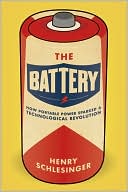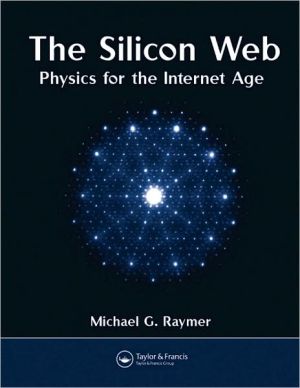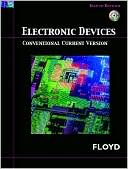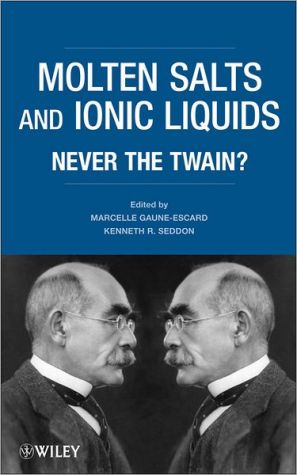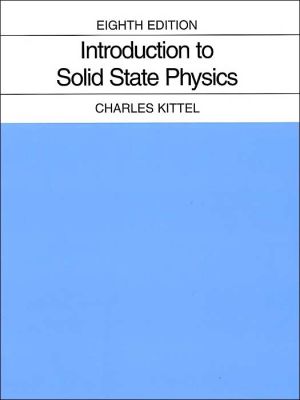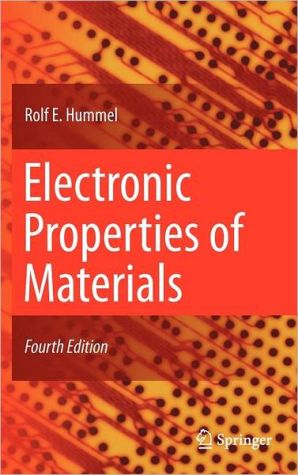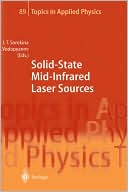Many Particle Physics
Search in google:
This comprehensive textbook utilizes Green's functions and the equations derived from them to solve real physical problems in solid-state theoretical physics. Green's functions are used to describe processes in solids and quantum fluids and to address problems in areas such as electron gas, polarons, electron transport, optical response, superconductivity and superfluidity. The updated third edition features several new chapters on different mean-free paths, Hubbard model, Coulomb blockade, and the quantum Hall effect. New sections have been added, while original sections have been modified to include recent applications. This text is ideal for third- or fourth-year graduate students and includes numerous study problems and an extensive bibliography. Booknews Teaches techniques of many-body theory and applies techniques to specific problems. After a chapter on introductory material, coverage includes Green's functions at zero temperature, nonzero temperatures, exactly solvable models, homogeneous electron gas, strong correlations, electron-phonon interaction, dc conductivities, optical properties of solids, superconductivity, and superfluids. This third edition covers more applications, and offers new material on Bethe lattice, different mean-free-paths, Hubbard model, Coulomb blockade, and the Quantum Hall effect. Mahan is affiliated with the University of Tennessee, and Oak Ridge National Laboratory. Annotation c. Book News, Inc., Portland, OR (booknews.com)
1.Introductory Material11.1.Harmonic Oscillators and Phonons11.2.Second Quantization for Particles111.3.Electron-Phonon Interactions261.3.1.Interaction Hamiltonian271.3.2.Localized Electron291.3.3.Deformation Potential311.3.4.Piezoelectric Interaction321.3.5.Polar Coupling341.4.Spin Hamiltonians361.4.1.Homogeneous Spin Systems381.4.2.Impurity Spin Models431.5.Photons481.5.1.Gauges491.5.2.Lagrangian531.5.3.Hamiltonian551.6.Pair Distribution Function58Problems622.Green's Functions at Zero Temperature652.1.Interaction Representation662.1.1.Schrodinger662.1.2.Heisenberg662.1.3.Interaction672.2.S Matrix702.3.Green's Functions712.4.Wick's Theorem762.5.Feynman Diagrams812.6.Vacuum Polarization Graphs832.7.Dyson's Equation862.8.Rules for Constructing Diagrams902.9.Time-Loop S Matrix952.9.1.Six Green's Functions962.9.2.Dyson's Equation992.10.Photon Green's Functions102Problems1063.Nonzero Temperatures1093.1.Introduction1093.2.Matsubara Green's Functions1123.3.Retarded and Advanced Green's Functions1183.4.Dyson's Equation1283.5.Frequency Summations1363.6.Linked Cluster Expansions1423.6.1.Thermodynamic Potential1423.6.2.Green's Functions1523.7.Real-Time Green's Functions1543.7.1.Wigner Distribution Function1573.8.Kubo Formula for Electrical Conductivity1603.8.1.Transverse Fields, Zero Temperature1633.8.2.Nonzero Temperatures1683.8.3.Zero Frequency1703.8.4.Photon Self-Energy1733.9.Other Kubo Formulas1743.9.1.Pauli Paramagnetic Susceptibility1743.9.2.Thermal Currents and Onsager Relations1773.9.3.Correlation Functions181Problems1834.Exactly Solvable Models1874.1.Potential Scattering1874.1.1.Reaction Matrix1894.1.2.T Matrix1924.1.3.Friedel's Theorem1954.1.4.Impurity Scattering1994.1.5.Ground State Energy2044.2.Localized State in the Continuum2074.3.Independent Boson Models2184.3.1.Solution by Canonical Transformation2184.3.2.Feynman Disentangling of Operators2214.3.3.Einstein Model2244.3.4.Optical Absorption and Emission2284.3.5.Sudden Switching2364.3.6.Linked Cluster Expansion2414.4.Bethe Lattice2474.4.1.Electron Green's Function2474.4.2.Ising Model2514.5.Tomonaga Model2564.5.1.Tomonaga Model2574.5.2.Spin Waves2624.5.3.Luttinger Model2644.5.4.Single-Particle Properties2674.5.5.Interacting System of Spinless Fermions2724.6.Polaritons2764.6.1.Semiclassical Discussion2764.6.2.Phonon-Photon Coupling2784.6.3.Exciton-Photon Coupling282Problems2915.Homogeneous Electron Gas2955.1.Exchange and Correlation2955.1.1.Kinetic Energy2975.1.2.Hartree2975.1.3.Exchange2975.1.4.Seitz's Theorem3015.1.5.[Sigma superscript (2a)]3035.1.6.[Sigma superscript (2b)]3045.1.7.[Sigma superscript (2c)]3055.1.8.High-Density Limit3065.1.9.Pair Distribution Function3085.2.Wigner Lattice3115.3.Metallic Hydrogen3155.4.Linear Screening3165.5.Model Dielectric Functions3235.5.1.Thomas-Fermi3235.5.2.Lindhard, or RPA3255.5.3.Hubbard3365.5.4.Singwi-Sjolander3385.5.5.Local Field Corrections3415.5.6.Vertex Corrections3435.6.Properties of the Electron Gas3465.6.1.Pair Distribution Function3465.6.2.Screening Charge3465.6.3.Correlation Energies3475.6.4.Compressibility3525.6.5.Pauli Paramagnetic Susceptibility3565.7.Sum Rules3585.8.One-Electron Properties3625.8.1.Renormalization Constant Z[subscript F]3655.8.2.Effective Mass3685.8.3.Mean-Free-Path369Problems3726.Strong Correlations3756.1.Kondo Model3756.1.1.High-Temperature Scattering3766.1.2.Low-Temperature State3836.1.3.Kondo Temperature3876.1.4.Kondo Resonance3876.2.Single-Site Anderson Model3896.2.1.No Hybridization3916.2.2.With Hybridization3956.2.3.Self-Energy of Electrons3966.3.Hubbard Model4036.3.1.Spin and Charge Separation4046.3.2.Exchange Graphs4096.4.Hubbard Model: Magnetic Phases4116.4.1.Ferromagnetism4136.4.2.Antiferromagnetism4166.4.3.An Example4226.4.4.Local Field Corrections427Problems4307.Electron-Phonon Interaction4337.1.Frohlich Hamiltonian4337.1.1.Brillouin-Wigner Perturbation Theory4347.1.2.Rayleigh-Schrodinger Perturbation Theory4387.1.3.Strong Coupling Theory4447.1.4.Linked Cluster Theory4487.2.Small Polaron Theory4547.2.1.Large Polarons4557.2.2.Small Polarons4567.2.3.Diagonal Transitions4587.2.4.Nondiagonal Transitions4597.2.5.Kubo Formula4637.3.Heavily Doped Semiconductors4677.3.1.Screened Interaction4687.3.2.Experimental Verifications4747.3.3.Electron Self-Energies4757.4.Metals4817.4.1.Phonons in Metals4827.4.2.Electron Self-Energies487Problems4958.dc Conductivities4998.1.Electron Scattering by Impurities4998.1.1.Boltzmann Equation4998.1.2.Kubo Formula: Approximate Solution5058.1.3.Ward Identities5148.2.Mobility of Frohlich Polarons5178.3.Electron-Phonon Relaxation Times5248.3.1.Metals5268.3.2.Semiconductors5278.3.3.Temperature Relaxation5318.4.Electron-Phonon Interactions in Metals5348.4.1.Force-Force Correlation Function5348.4.2.Kubo Formula5378.4.3.Mass Enhancement5458.4.4.Thermoelectric Power5458.5.Quantum Boltzmann Equation5498.5.1.Derivation of the QBE5508.5.2.Gradient Expansion5548.5.3.Electron Scattering by Impurities5578.6.Quantum Dot Tunneling5618.6.1.Electron Tunneling5618.6.2.Quantum Dots5678.6.3.Rate Equations5718.6.4.Quantum Conductance575Problems5769.Optical Properties of Solids5799.1.Nearly Free-Electron Systems5799.1.1.General Properties5799.1.2.Force-Force Correlation Functions5819.1.3.Frohlich Polarons5859.1.4.Interband Transitions5889.1.5.Phonons5909.2.Wannier Excitons5929.2.1.The Model5929.2.2.Solution by Green's Functions5969.2.3.Core-Level Spectra6009.3.X-ray Spectra in Metals6039.3.1.Physical Model6039.3.2.Edge Singularities6079.3.3.Orthogonality Catastrophe6129.3.4.MND Theory6219.3.5.XPS Spectra624Problems62610.Superconductivity62710.1.Cooper Instability62810.1.1.BCS Theory63510.2.Superconducting Tunneling64410.2.1.Normal-Superconductor64510.2.2.Two Superconductors64810.2.3.Josephson Tunneling65210.2.4.Infrared Absorption66010.3.Strong Coupling Theory66410.4.Transition Temperature670Problems67411.Superfluids67711.1.Liquid [superscript 4]He67711.1.1.Hartree and Exchange67911.1.2.Bogoliubov Theory of [superscript 4]He68211.1.3.Off-Diagonal Long-Range Order68611.1.4.Correlated Basis Functions69011.1.5.Experiments on n[subscript k]69711.1.6.Bijl-Feynman Theory70211.1.7.Improved Excitation Spectra70711.1.8.Superfluidity71011.2.Liquid [superscript 3]He71311.2.1.Fermi Liquid Theory71411.2.2.Experiments and Microscopic Theories72011.2.3.Interaction Between Quasiparticles: Excitations72311.2.4.Quasiparticle Transport72911.2.5.Superfluid [superscript 3]He73511.3.Quantum Hall Effects74211.3.1.Landau Levels74211.3.2.Classical Hall Effect74511.3.3.Quantum Hall Effect74711.3.3.1.Fixed Density74911.3.3.2.Fixed Chemical Potential74911.3.3.3.Impurity Dominated75011.3.4.Laughlin Wave Function75211.3.5.Collective Excitations75711.3.5.1.Magnetorotons75711.3.5.2.Quasiholes760Problems761References765Author Index777Subject Index781

